Arts Embrace All at the Saint Maurice Monastery in Bakonybél – Interview with Father Dr Izsák Baán
Strengthening and binding local creative communities and communicating their activities to a broader audience are Cult-Net goals which the Saint Maurice Monastery of Bakonybél and its community could fully identify with. As a result, the collaboration with the VEB2023 ECOC programme, focusing on visual arts and music, was born, providing opportunities to learn about monastic life in Bakonybél.
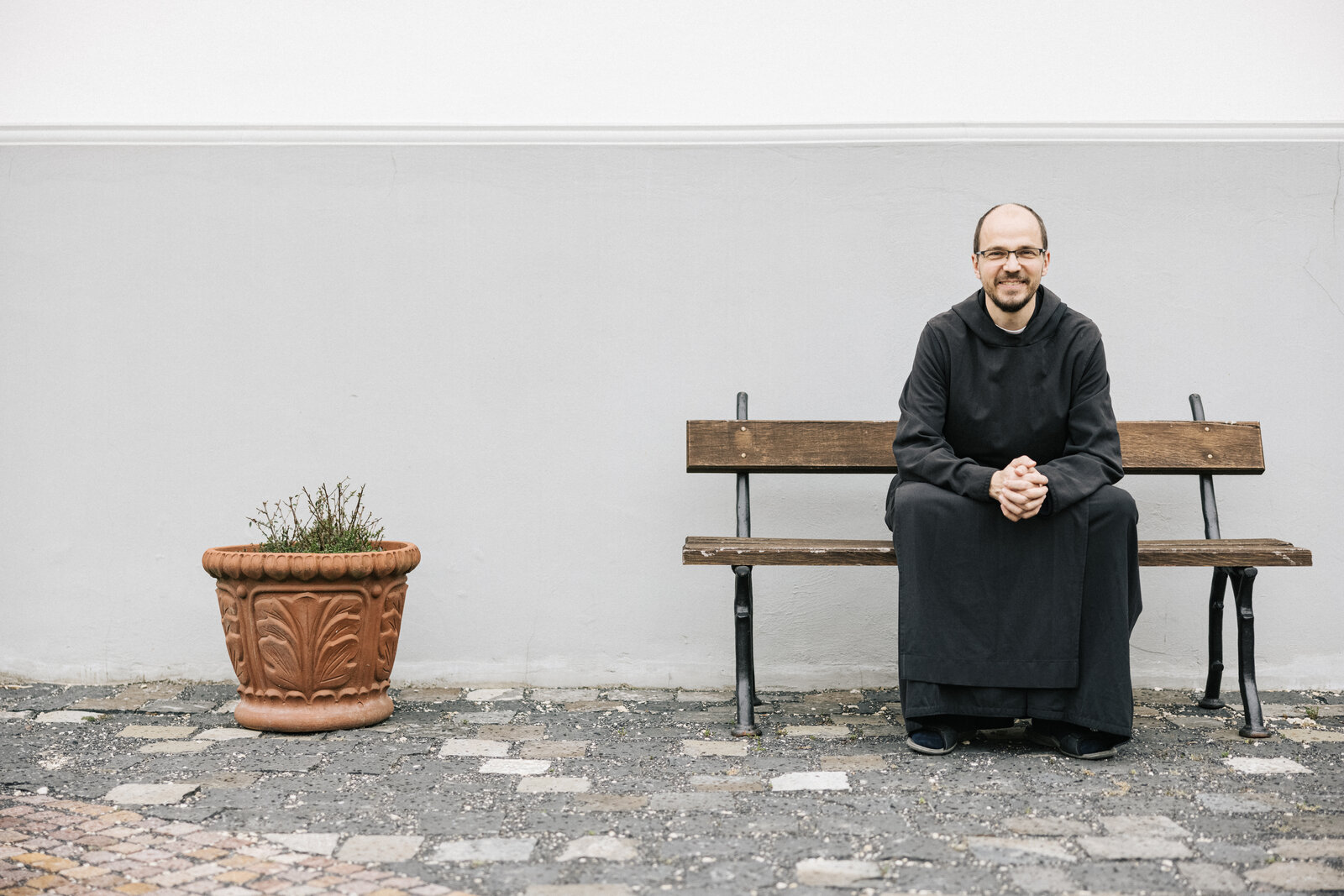
Photo: Földes Árpád
The word culture derives from the Latin verb colo, colere, whose primary meaning is to dwell somewhere or to cultivate a place or land. In fact, this is a prime characteristic of Bakonybél, a monastic community and monastery that has existed here for a thousand years and has created its own material, aesthetic, and musical culture. What defines monasteries, among other things, is the fact that monks do not settle in densely populated areas but further away, in remote parts, where people from the settlements can go to recharge their batteries. Such places have a special attraction and a message that people from the art world can relate to. This is the spirit of the place in Bakonybél: the plentiful fruits of encounters which have come about here between residents and visitors,
– says Father Izsák, a monk in the Saint Maurice Monastery Bakonybél for twenty-one years.
He also told us that in their monastic life, Benedictine monks leave their former homes, opting for a new life. They also take a vow of stability, a lifelong commitment to remain and live in one location.
We like to say that we have actually been here for a thousand years because our spiritual family, the monastic community, was here long before the village was born. There is also a close relationship between monasteries, a kind of alliance, because we are in one family with Tihany and Pannonhalma, for example. But the same was true of monasteries that no longer exist, such as Taliándörögd or Monostorapáti. These were places with which the monks of the time were in active contact, so we can say that there was a monastic ‘cult-net’ around 900 years ago, acting as a communication network between the monasteries of the time.
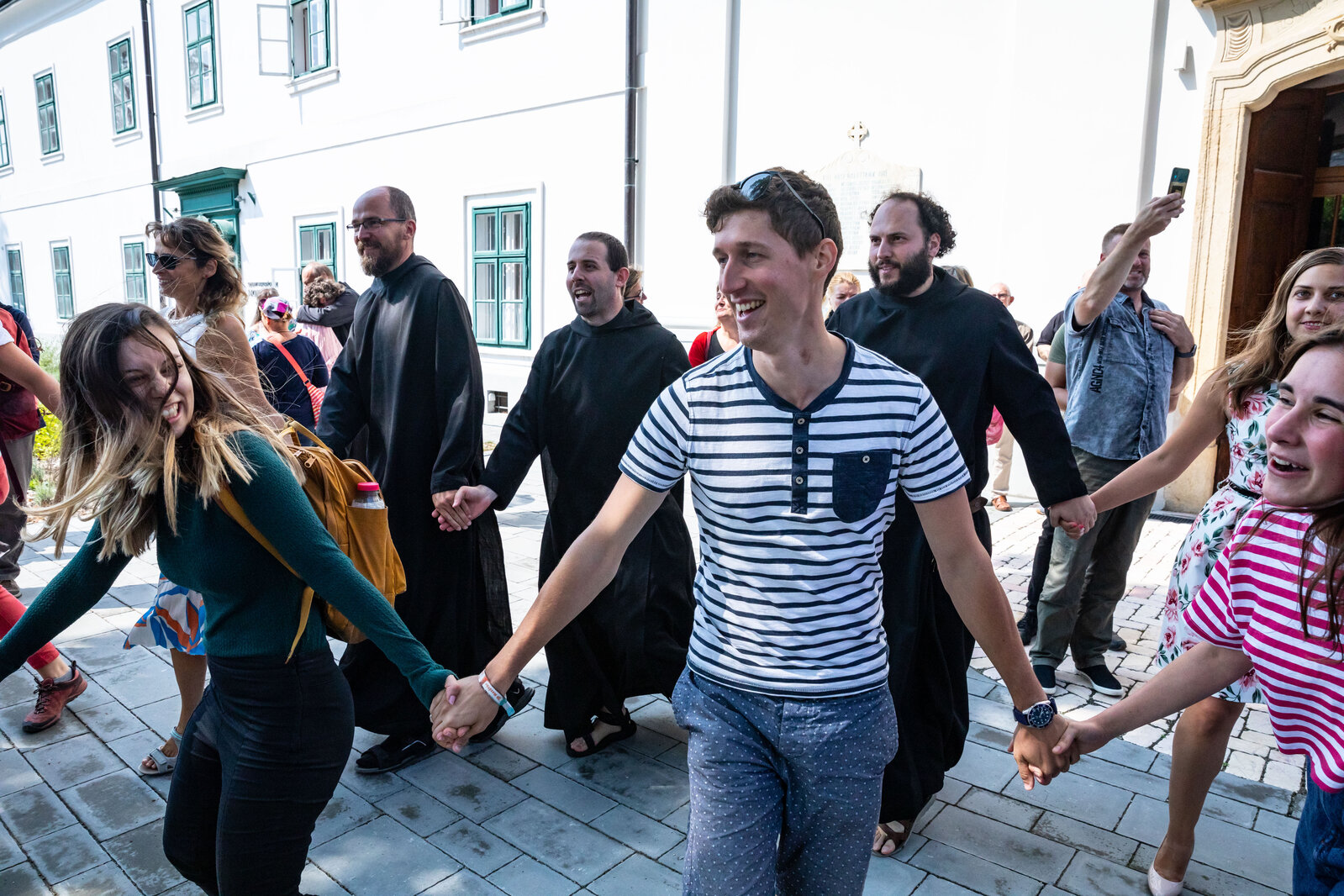
Photo: Oláh Gergely Máté
Music is a central element
Since his childhood, music has played an important part in Father Izsák's life: he attended and graduated from a conservatory. He is currently the director of the local choir. As he puts it, chanting prayers is an integral part of the daily monastic routine, with a total of two and a half hours of singing together daily. Many of the brothers in the monastery have a background in music, which provides a solid foundation for creating a culture and sense of musical sophistication.
In my mind it's always inspiring to see how our musical culture, a subtle, meditative Gregorian musical tradition influences other musicians who come to us from entirely different worlds. Incredibly good things tend to come out of these initiatives. There's always a depth and meeting of arts to these occasions.
The Cult-Net programmes that begun last Advent clearly focus on classical music. They aim to create an opportunity for meetings between locals and visitors with takeaways for everyone afterwards. Interactivity plays a particularly significant role in the programmes, which, as Father Izsák puts it, either creates culture or fills existing culture with life. Concerts perfectly set in the monastery building, the café, or the gardens are usually combined with a workshop or a discussion with the artists.
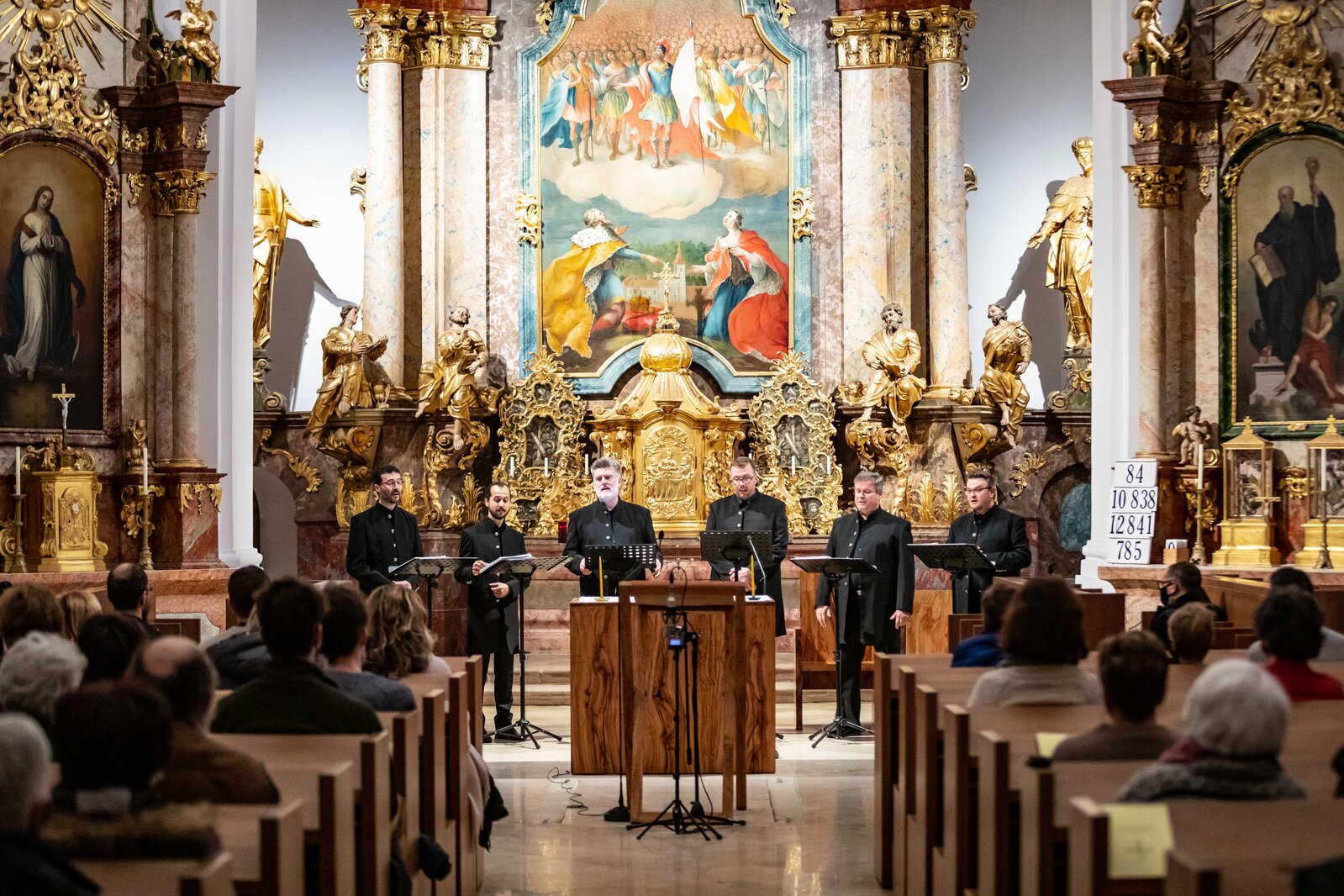
Photo: Máté Gergely Oláh
The role of visual arts in monastic life
At the start of the Cult-Net programme, the monks established a unique cooperation with a local painter, Erik Novák, who also happens to be a film director.
At first sight, Erik's visual world seems far removed from the quiet, prayerful atmosphere of the monastery. The fact that we all live here, are neighbours, and are connected by several ties, has created a dialogue and meeting of minds between us. Erik, who has been painting portraits of residents for years now, has begun to paint saints, St. Gerard of Csanád, among others. These paintings represent a visuality in which the classical, canonical image of the saint, the way a martyr is usually depicted and the contemporary world of Erik meet and create extraordinary pieces of art.
Contemporary art also features in the programme, with the involvement of the MANK (Hungarian Creative Arts Nonprofit Ltd.) in Szentendre: last year, a competition was launched, which resulted in the creation of an outdoor exhibition. The given theme for the competition was A Feast at the Lord (Vendégségben az Úrnál), depicting the Blessed Sacrament. The collection was on display in Szeged but will soon be exhibited in Bakonybél. A unique feature of the show is that the paintings will be displayed on panels and stands in the garden of the monastery for one full month.
The Cult-Net Programme has also set up a media studio for youngsters from the village, where children and young adults learn about photography and filmmaking with the help of experienced photographers and film professionals.
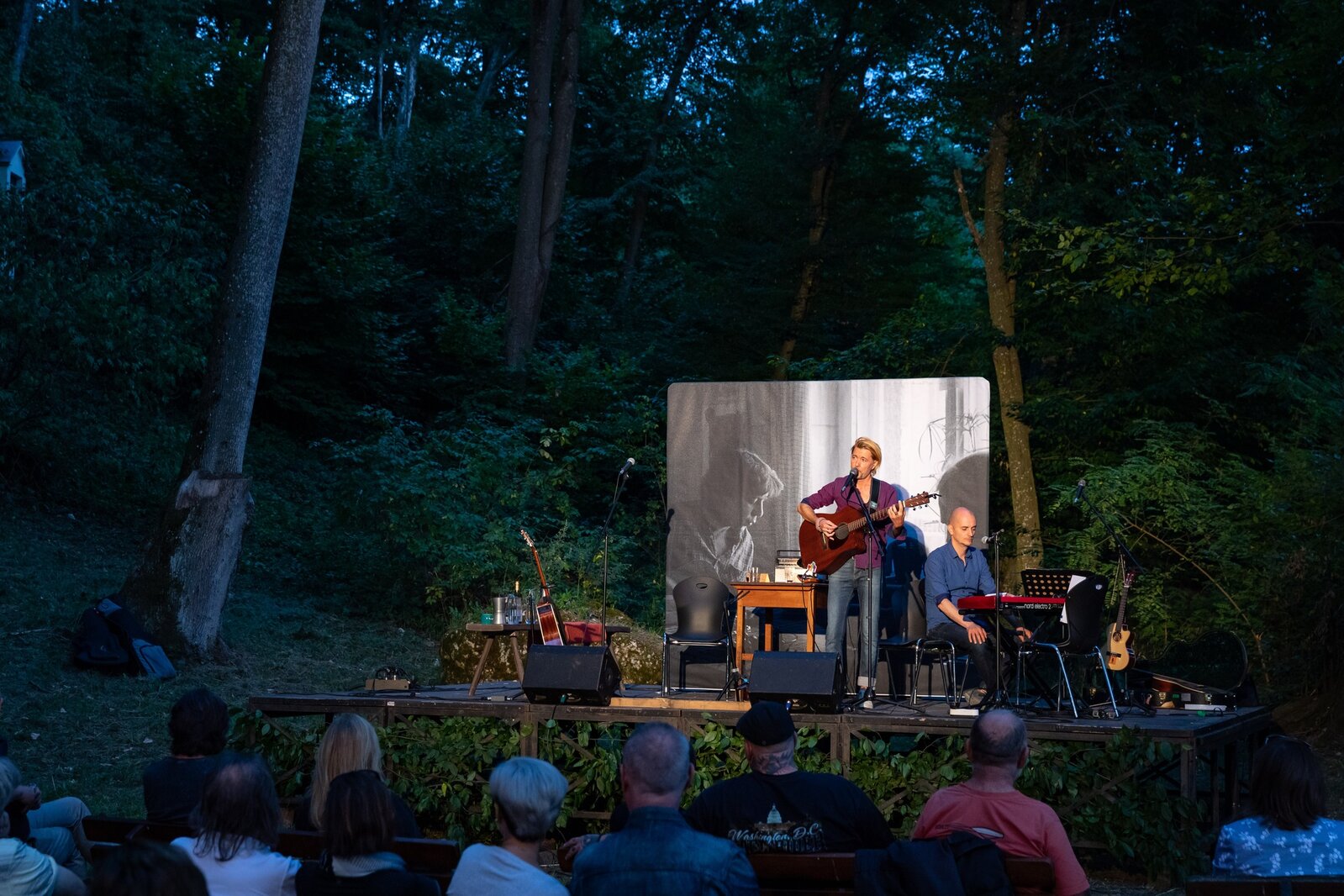
Photo: Máté Gergely Oláh
September ends with the Saint Gerard Festival
Why will the next event, on the last weekend of September, be dedicated to Saint Gerard?
The spirit of Bakonybél is closely linked to the ancient saints and hermits who began their spiritual life here a thousand years ago. One of them was Saint Gerard. He is an important saint in Hungarian history who was a very versatile human being: he was a teacher, a preacher, an evangelist, an organiser, a monk, a hermit, and in the end, a martyr. Gerard is therefore of great importance in Bakonybél
- Father Izsák says.
During the Gerard Festival, on 24 September, the Louisiana Double and the Csillagfröccs (Starspritzer) bluegrass and gospel ensemble will perform The Gospel Story. The show will not be just a simple musical performance – the musicians will also talk about their music and invite the audience back to enjoy an afternoon musical feast.
Visitors can see Erik Novák's works during the open studio, and the vernissage of the "A Feast at the Lord" exhibition is scheduled for 2 p.m. The High Mass will start at 5 p.m. where the monastery’s choir will also perform. Classical music will take centre stage in the evening, with a concert of the Saint Ephraim Men's Choir, conducted by Tamás Bubnó, starting at 8 p.m.
In the morning of 25 September, there will again be an open studio, followed by the premiere of Zsolt Prieger's and Bori Magyar's Psalter at 6 p.m., a combination of sacred text and contemporary music. The weekend will close with a joint workshop with the performers starting at 7 p.m.
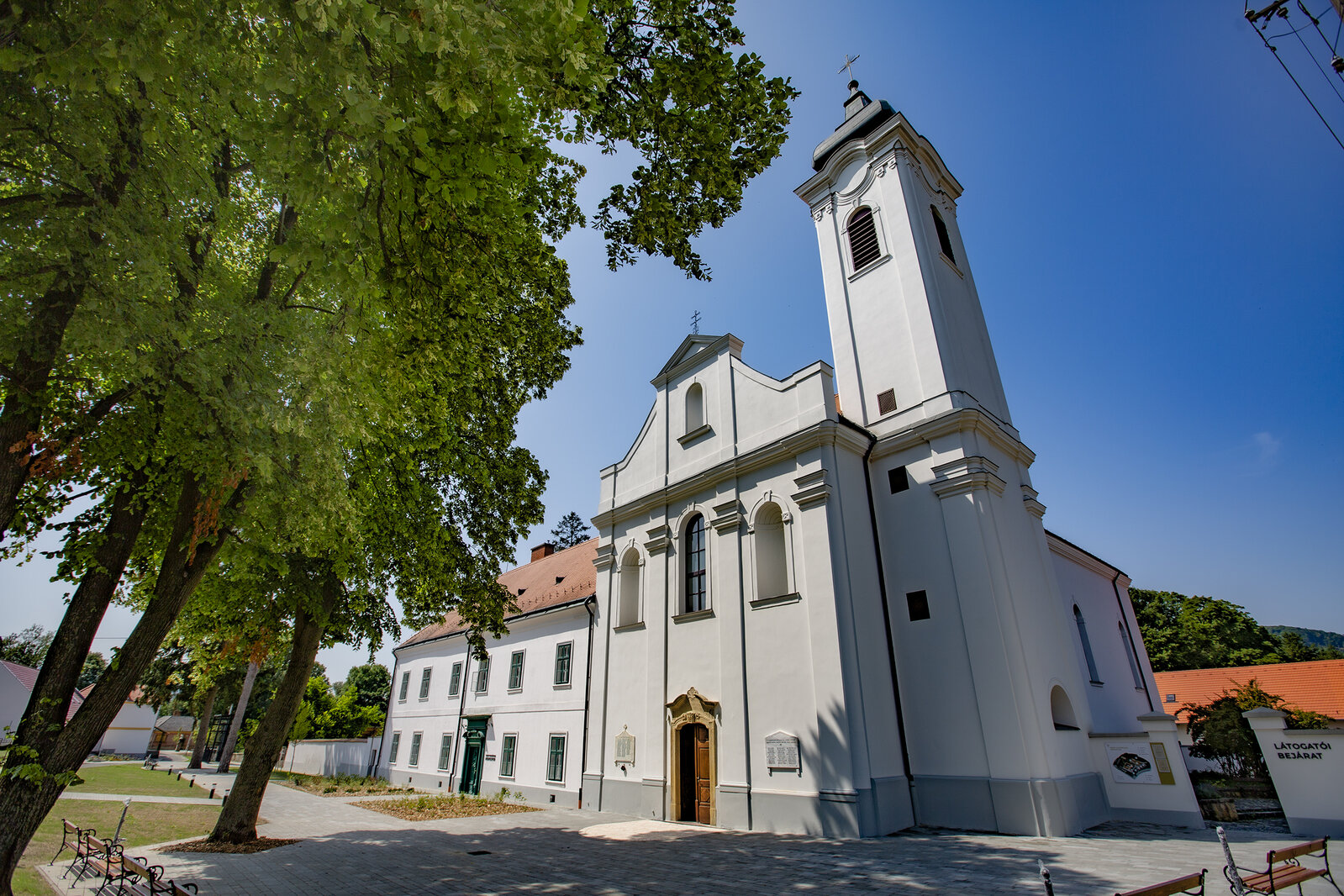
Photo: Csaba Toroczkai
The timeliness of the Cult-Net programme
At the end of our conversation, Father Izsák spoke of how an initiative, such as the Cult-Net programme, can strongly support people in today's world by helping connect with others in difficult times.
We are very concerned ourselves about the direction the world is heading. We recognise that the coming months will be difficult, and all kinds of forces will work to alienate people even more: discontent, tensions and stark emotions will grow. Violence is taking centre stage in the world, even in our neighbourhood, and therefore we believe it is so important that people try to connect despite it all. It is precisely this web, this net, the meaning in the word 'Cult-Net', that keeps us together. A net that can catch those who would fall. The point is to connect humanely through the arts and culture rather than give in to the forces that pull us apart. It is in this very area that we see our role as a monastery and monastic community: to hold that net and not let what has once been created fall apart.
